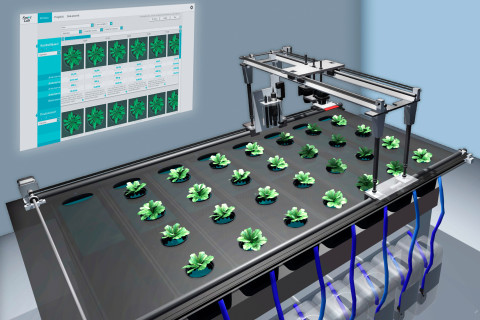Thanks to the latest technology, it is possible to grow plants in a lab, take pictures of them using various cameras and, when all is done, upload the data to a cloud. In Sm4rtLab Plants, this is further crowned by photorealistic 3D rendering and augmented reality goggles, which can be used remotely from across the world.
The University of Eastern Finland’s most advanced virtual learning environment, Sm4rtLab, is now supplemented by Sm4rtLab Plants, an environment designed for the teaching of biology.
“Sm4rtLab has been proven to work well, and a similar virtual environment can now be introduced to other fields as well,” Professor of Photonics Pasi Vahimaa says.
However, some ideas had to be rethought for Sm4rtLab Plants.
“Besides teaching, the experimental setting and the application also had to be made available for research. Moreover, we had to find a pedagogically sound way of creating educational content for biology. The expertise of everyone involved in this project provided support for one another, and we couldn’t have done this on our own,” Professor of Biological and Biomedical Imaging Markku Keinänen says.
Last autumn, Sm4rtLab Plants was used for the first time on a course where students completed their assignments on plant nutrition deficiencies in the new learning environment.
“Plant nutrition deficiencies are a major problem globally. Hydroponic cultivation in the lab made it possible to control the plants’ intake of nutrients, and the cameras and sensors available in the experimental setting allowed for a continuous, automated monitoring of plant symptoms,” Keinänen says.
The symptoms caused by nutrition deficiencies were clearly visible to the naked eye after a couple of weeks; however, the presence of different cameras made it possible to detect symptoms even earlier on, and it was also possible to monitor and compare symptom development at different stages of the experiment.
In addition to a regular and a thermal camera, the experimental setting had a greyscale camera adjusted for the red and near-infrared areas. These images were then used to calculate a false colour image indicating the stresses experienced by the plant.
“The system performs measurements and records data on a continuous basis, making it possible to return to that data later on. In the future, we can use this system to build a database of different plants.”
Plant phenotyping is a growing field globally, and a lot of research is being done in the area. This is also why the new learning environment has attracted plenty of interest, even from outside the university.
“Sm4rtLab Plants enables inexpensive plant phenotyping. For instance, we are now planning a pilot project that would give researchers from Sweden remote access to Sm4rtLab Plants,” Keinänen says.
According to him, the new learning environment is scalable and can be used at different levels of education. The laboratory is available to everyone, and different types of experimental settings can be built there to cater to different needs.
“We also seek to identify new business potential and business activities, as well as new ways of processing data. Our learning environment could also be used in transnational education.”
Photo caption: In addition to the Department of Environmental and Biological Sciences and the Department of Physics and Mathematics, the project also involved the university’s IT Services and the Joensuu-based software company Process Genius.
